How To Remove Thermal Paste From a CPU
Every time you change a cooler, you need to replace the thermal paste.
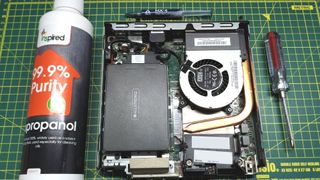
Keeping our PC running smoothly is not the most glamorous of tasks, but it is essential to ensure that you’re getting the best from your machine. Replacing your CPU’s thermal interface material (TIM), ideally with the best thermal paste we’ve tested, is one of those mundane tasks that takes just a few minutes. And if your machine has been running hot (or the fans are constantly whirring loudly, which often means the system is toasty), a fresh application of thermal paste can improve performance while dropping your temperatures for improved component longevity.
You’ll also need to remove and replace your CPU’s thermal paste if you’re upgrading the cooler (perhaps to one of the best CPU coolers) or reusing an old CPU in a new motherboard.
In this how to, we’ll be removing the thermal paste on an old Lenovo M93P Tiny running an I7 4790S. This tiny box lives under a television, providing a Chrome OS Flex desktop in the living room. We need to replace the thermal paste and give it a clean, to assure it’s ready for a few more years of service. However, the steps would be the same if we were doing this with a custom-built PC (see how to build a PC).
How To Replace the Thermal Paste on a CPU
1. Turn on the PC and let it run for a few minutes before shutting down and unplugging. Thermal paste can set hard, and performing a cold pull of the heatsink / cooler can damage the CPU. Alternatively a hot air gun / hair dryer can be used to gently heat the area.
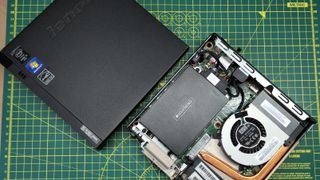
2. Remove the heatsink / cooling assembly from the CPU / GPU. Take your time and loosen the screws to ensure that even pressure is released.
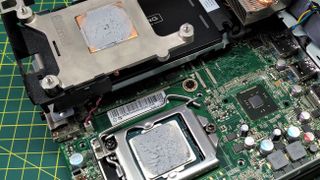
3. Use a little isopropyl alcohol on some lint-free cloth and start by wiping the thermal paste from the heatsink. By cleaning the heatsink first we can test how easily the paste cleans off before we get to the CPU / GPU.

4. Clean the paste from the CPU using isopropyl alcohol and a cloth. Keep the CPU in the socket and gently remove the paste. Don’t be heavy handed and take your time. Any paste in recesses can be cleaned using a cotton swab.
Stay On the Cutting Edge: Get the Tom's Hardware Newsletter
Get Tom's Hardware's best news and in-depth reviews, straight to your inbox.
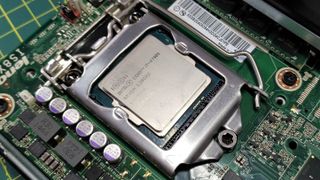
5. Apply the correct amount of thermal paste to the CPU. But first allow the isopropyl alcohol time to evaporate, checking that there are no pools of liquid or debris before applying.
6. Reseat the heatsink / cooling assembly, applying even pressure when placing it on top of the CPU.
7. Screw down the heatsink / cooling assembly by tightening the screws in a diagonal sequence, a few turns at a time. This again keeps pressure relatively even, spreading the thermal paste across the top of the heat spreader/CPU. It also assures there isn’t too much pressure in any one corner, which in a worst-case scenario can physically damage your processor.
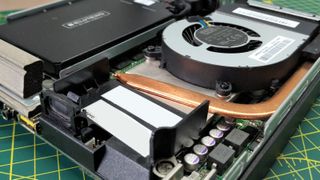
8. Power up the PC and use it as normal. Before powering up, be sure to check for any missed screws, trapped wires or misaligned cables. Little “gotchas” happen more often than we care to admit.
Les Pounder is an associate editor at Tom's Hardware. He is a creative technologist and for seven years has created projects to educate and inspire minds both young and old. He has worked with the Raspberry Pi Foundation to write and deliver their teacher training program "Picademy".
